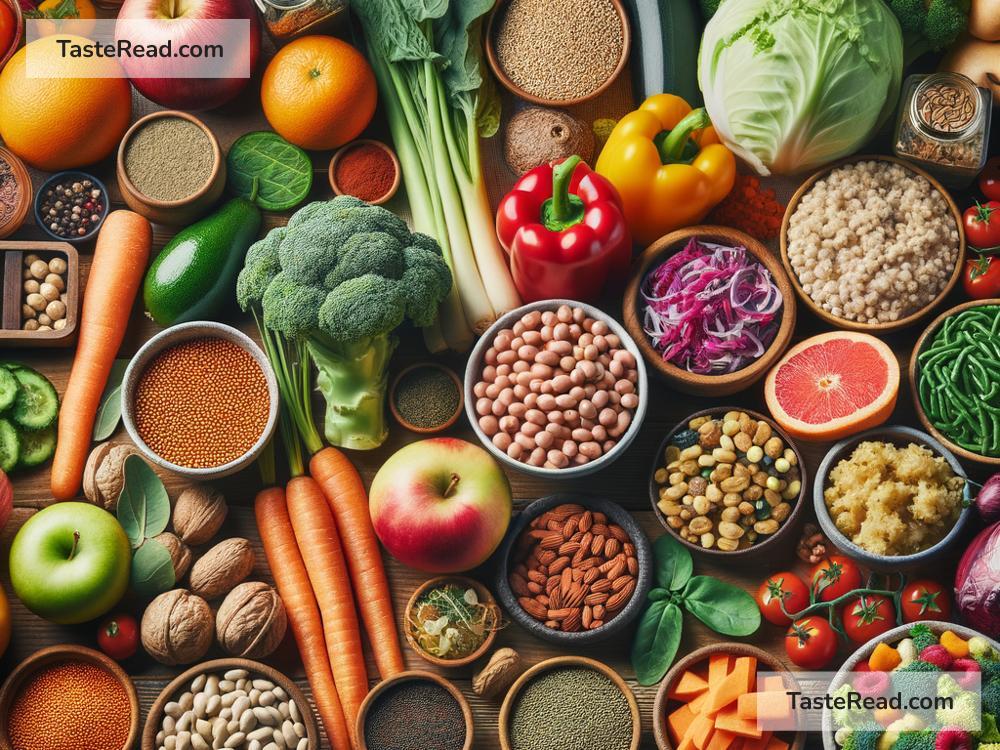Improving Dietary Diversity: Simple Foods for a Healthier Life
Eating a variety of foods is one of the best ways to stay healthy. Many people stick to the same meals every day because it’s convenient, affordable, or simply out of habit. However, dietary diversity—eating different types of foods—can give your body all the nutrients it needs to feel strong, energetic, and balanced. And the good news? You don’t need fancy ingredients to do it. In this article, we’ll explore simple foods that can help improve dietary diversity and support your well-being.
Why Is Dietary Diversity Important?
Different foods provide different nutrients. For example, fruits and vegetables are great sources of vitamins, minerals, and fiber; grains provide energy; and proteins help repair and build tissues. By eating a range of foods, you ensure your body gets everything it needs to function properly.
When your diet lacks diversity, you may miss out on essential nutrients, which can lead to health problems such as fatigue, poor immune function, or even chronic diseases over time. Improving dietary diversity is about making sure every meal contains foods from different food groups, and it’s easier than you think to make small changes that have a big impact.
Start with Fruits and Vegetables
Fruits and vegetables are the cornerstones of dietary diversity. They come in all shapes, sizes, colors, and flavors, making it exciting to try something new. Aim to eat at least five servings of fruits and veggies every day, but don’t just stick to apples and bananas—branch out.
Here are some ideas to boost diversity with simple produce:
- Different Colors: Every color provides unique nutrients. For example, orange carrots are high in beta-carotene, green spinach is packed with iron, and purple berries contain antioxidants. Eating a colorful plate ensures you get a variety of vitamins.
- In-Season Produce: Seasonal fruits and vegetables are often cheaper and more flavorful. For example, enjoy watermelon in the summer and squash in the winter. Shop locally to see what’s available.
- Frozen Options: If fresh produce isn’t accessible, frozen fruits and vegetables are just as nutritious. Add frozen peas to soups, toss frozen broccoli into stir-fries, or blend frozen berries into smoothies.
Try Whole Grains
Whole grains are a fantastic source of energy, fiber, and nutrients like B vitamins and magnesium. Switching from refined grains (like white bread and white rice) to whole grains is an easy way to improve dietary diversity.
Options to consider:
- Rice Varieties: Instead of sticking to white rice, try brown rice, black rice, or even wild rice. Each has a slightly different flavor and nutrient profile.
- Oats: Oats are versatile and can be used in breakfasts, baking, or even crumbles for savory dishes. Add fruit or nuts for extra variety.
- Quinoa: Quinoa is a protein-rich grain perfect for salads or side dishes. It has a mild taste and pairs well with vegetables and spices.
Incorporate Protein from Plants and Animals
Proteins are essential for building muscles, repairing tissues, and supporting immune health. While many people automatically think of meat, there are plenty of plant-based and affordable options to choose from. Mixing both sources adds balance to your diet.
Simple protein ideas:
- Eggs: Eggs are cheap, versatile, and packed with nutrients. Try boiled eggs for snacks, scrambled eggs for breakfast, or fried eggs on whole-grain toast.
- Legumes: Beans, lentils, and chickpeas are rich in protein and fiber. Add black beans to tacos, chickpeas to salads, or lentils to curries and soups.
- Fish: If you eat animal protein but haven’t tried much seafood, start with simple options like canned tuna or salmon. Fish is rich in healthy fats and nutrients like omega-3s.
- Nuts and Seeds: Sprinkle nuts and seeds like almonds, sunflower seeds, or chia seeds onto cereals, salads, or smoothies for extra protein and crunch.
Add Healthy Fats
Healthy fats are important for brain function, hormone production, and keeping your skin healthy. Often overlooked, adding small amounts of these fats to your diet can make a big difference.
Here are some simple fat-rich foods:
- Avocado: Spread avocado on toast, mix it into a salad, or mash it into guacamole for a nutritious addition to any meal.
- Olive Oil: Use olive oil instead of butter for cooking or drizzle it over salads and roasted vegetables.
- Fatty Fish: Salmon, mackerel, and sardines are high in omega-3 fatty acids that support heart and brain health.
Sprinkle in Some Flavor
Spices and herbs aren’t just for taste—they’re loaded with antioxidants and health benefits. Adding different herbs and spices to your meals can improve your dietary diversity, and they’re an affordable way to experiment with new flavors.
Ideas to try:
- Turmeric: Add turmeric to rice dishes, soups, or smoothies for its anti-inflammatory benefits.
- Garlic: Fresh or powdered garlic gives your meals a flavor boost and supports your immune system.
- Herbs: Explore herbs like basil, cilantro, mint, and parsley. Use them fresh or dried to brighten up dishes.
Small Changes Matter
Improving dietary diversity doesn’t mean overhauling your entire eating routine. Start small—try adding one new vegetable to your weekly meals or swapping white bread for whole grain. Mix up the proteins on your plate or experiment with new spices.
Eating a wider variety of foods not only nourishes your body but also makes meals more exciting and enjoyable. So next time you plan your grocery list, think of one or two new foods to add. Improving dietary diversity is simple—and it’s a delicious way to build better health, one plate at a time.


